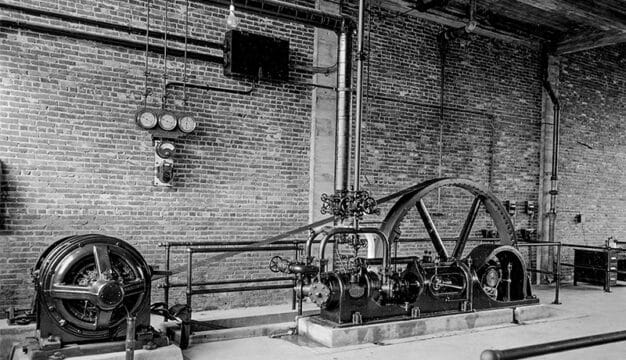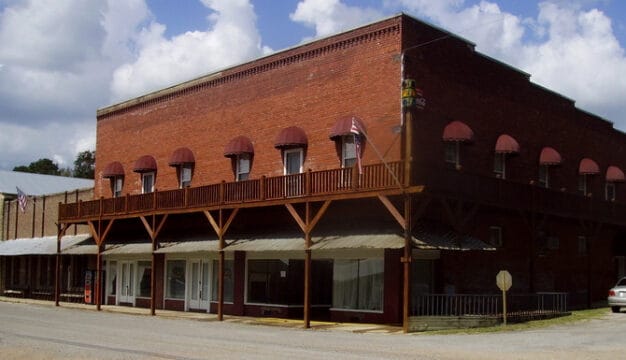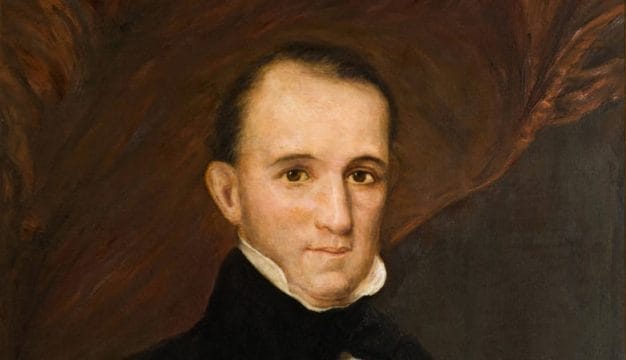Snead State Community College
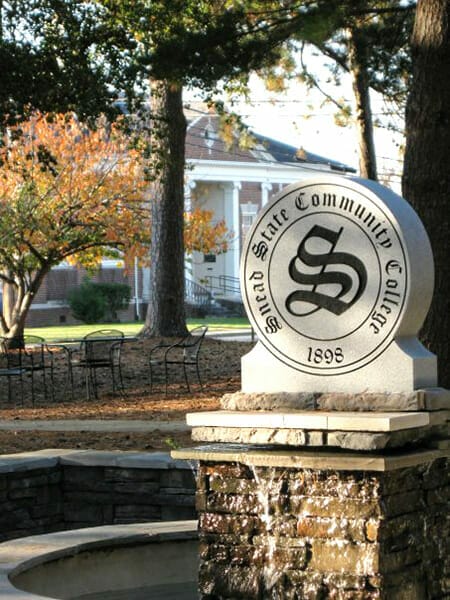 Snead State Community College Entrance
Dating from 1898, Snead State Community College in Boaz, Marshall County, is the oldest school in Alabama‘s community college system to award associate degrees.
Snead State Community College Entrance
Dating from 1898, Snead State Community College in Boaz, Marshall County, is the oldest school in Alabama‘s community college system to award associate degrees.
The impetus for the school dates to 1894, when Boaz officials appealed to a local Methodist church to help fund Boaz Academy, a college preparatory high school. With little state support for the school, the church agreed to take control and oversight was transferred to the Alabama Conference of the Methodist Episcopal Church in December 1898. The school was reestablished as the Boaz Seminary the following year and opened on July 17 in the home of E. B. L. Elder, a minister with the small Boaz Methodist Church, with 70 pupils. Enrollment quickly swelled to 189 during the first term, requiring the construction of a new classroom building in 1901. The school focused on training individuals as seminarians and teachers and otherwise preparing men and women to be participating citizens. The school was called a “seminary” because of its church affiliation, but by 1903, it was graduating more individuals with teaching certificates than any other school in the state.
In 1906, the school was renamed the John H. Snead Seminary, for local businessman and trustee John H. Snead. He had donated land and money to the school, arranged a mortgage allowing it to purchase additional land, and forgave the balance of the mortgage in 1905, which was touted as his greatest contribution. The seminary served as a high school for Boaz but also attracted students from across northeast Alabama and from other states. It continued to grow during the first decade of the 1900s, and the curriculum expanded to include agriculture, Greek, and Latin and began training music teachers around 1908.
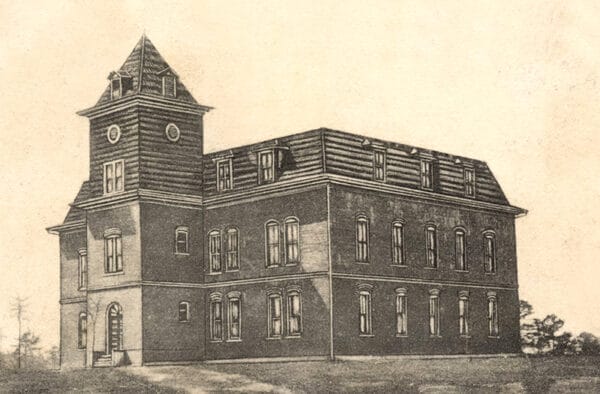 J. H. Snead Seminary
Although the school experienced continued growth, it also faced a number of setbacks. Between 1901 and 1909, several fires destroyed the classroom building and both the boys’ and girls’ dormitories. The new girls’ dormitory, which opened in 1909, was named for Rebecca McCleskey, wife of one of the school’s first trustees who had boarded female students in her home. It was the first building in Boaz to have electricity and an indoor toilet. It was not operated by the school but by the Woman’s Home Missionary Society of the Methodist Episcopal Church. A smallpox outbreak in early 1910 prompted officials to convert one wing of McCleskey Hall into a quarantine ward. Administrators, local nurses, and students who had been vaccinated tended to the sick as classes continued. Anna D. Elder, wife of the school’s principal, E. B. L. Elder, travelled to Cincinnati, Ohio, and returned with vaccines for most of the students.
J. H. Snead Seminary
Although the school experienced continued growth, it also faced a number of setbacks. Between 1901 and 1909, several fires destroyed the classroom building and both the boys’ and girls’ dormitories. The new girls’ dormitory, which opened in 1909, was named for Rebecca McCleskey, wife of one of the school’s first trustees who had boarded female students in her home. It was the first building in Boaz to have electricity and an indoor toilet. It was not operated by the school but by the Woman’s Home Missionary Society of the Methodist Episcopal Church. A smallpox outbreak in early 1910 prompted officials to convert one wing of McCleskey Hall into a quarantine ward. Administrators, local nurses, and students who had been vaccinated tended to the sick as classes continued. Anna D. Elder, wife of the school’s principal, E. B. L. Elder, travelled to Cincinnati, Ohio, and returned with vaccines for most of the students.
In 1913, the public elementary school in Boaz burned to the ground, and the town was unable to replace it. The seminary took in the displaced students, creating a need for additional space. Private contributions funded the construction of Nottingham Primary School adjacent to the seminary campus, and Snead Seminary operated the primary school until 1924 when Boaz constructed a new school. Following Elder’s term as principal, John T. Terry served in the position for a year, and W. T. Weston followed him, serving for three years. The first president of Snead was J. L. Brasher, who served from 1906-11. The presidency then went unfilled until 1914, when William Fielder was hired. During his tenure (which lasted until 1931), Fielder oversaw numerous fundraising drives that led to the construction of several new buildings, including a new administration building that now houses an auditorium named in his honor. The school also added a new boy’s dormitory and a gymnasium, which was the first indoor basketball facility in north Alabama and is now the Student Union Building.
By the end of the 1920s, John H. Snead Seminary had produced more than 1,200 graduates, and Boaz had built a public high school. Fielder saw that a junior college would better serve the town and region, but the onset of the Great Depression prevented the school from raising the necessary funds. Fielder retired in 1931 due to failing health and was succeeded by Conway Boatman, a 1911 Snead graduate who reaffirmed the school’s commitment to becoming a college. He immediately set out to raise money while planning necessary curriculum and administrative changes.
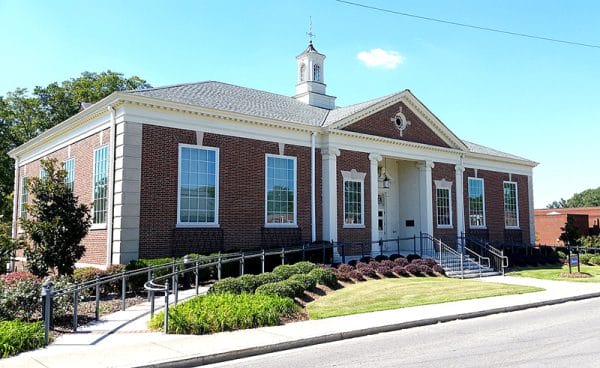 Norton Social Sciences Building
On May 22, 1935, the University Senate of the Methodist Episcopal Church approved the college plan, and that night the final graduation of the John H. Snead Seminary was held. The school split into a high school renamed Snead Academy and the Snead Junior College. Academy classes began on September 4, 1935, and junior college classes began one week later. Both institutions remained under the control of the Methodist church. The high school curriculum was phased out over the next three years as the school transitioned into a college. The college curriculum was divided into two primary tracks, one for students seeking two-year degrees and one for students who planned to transfer to a four-year institution. Snead Junior College was accredited by the Association of Alabama Colleges in April 1936 and accredited by the Commission on Colleges of the Southern Association of Colleges and Schools in 1941.
Norton Social Sciences Building
On May 22, 1935, the University Senate of the Methodist Episcopal Church approved the college plan, and that night the final graduation of the John H. Snead Seminary was held. The school split into a high school renamed Snead Academy and the Snead Junior College. Academy classes began on September 4, 1935, and junior college classes began one week later. Both institutions remained under the control of the Methodist church. The high school curriculum was phased out over the next three years as the school transitioned into a college. The college curriculum was divided into two primary tracks, one for students seeking two-year degrees and one for students who planned to transfer to a four-year institution. Snead Junior College was accredited by the Association of Alabama Colleges in April 1936 and accredited by the Commission on Colleges of the Southern Association of Colleges and Schools in 1941.
Over the next quarter century, the curriculum changed only modestly, remaining focused on four-year transfer education and teacher preparation, but the pace of physical improvements increased. Construction projects included the Norton Library (1940), Pfeiffer Hall girls’ dormitory (1942), and the Elrod Science Building (1964). In 1967, Snead Junior College became a part of the state system of junior colleges under the control of the Alabama State Board of Education and was renamed Snead State Junior College. Virgil McCain, who had served as president from 1954-1959, returned from Athens State College in 1967 to oversee the transition from a private school to a state school. Campus expansions continued in the last quarter of the twentieth century with the additions of the McCain Learning Resource Center (1976), the Glenn Maze Music Building (1980), and the Osborn English Building (1988). The campus began expanding as well, with the establishment of the Technology Center in a former Tennessee Valley Authority facility (1981) and the construction of the Weathers Business Building and the Tom Bevill Continuing Education Center in 1992.
 William H. Osborn English Building
In the 1980s, as traditional junior colleges and technical colleges transitioned into comprehensive community colleges, Snead also began offering career and technical programs such as office administration, nursing, computer science, and electronics engineering. In May 1992, Snead State Junior College became Snead State Community College. The school more closely resembles the old junior college model than most community colleges, however, as the majority of students enroll in transfer-out programs. In 2003, Snead State began to develop and expand its online courses, with more than 70 courses available through the Distance Learning program. This period also saw several significant renovation projects, including the Elrod Science Building and the Elder Hall dormitory in 2004. A nearby abandoned National Guard Armory was repurposed to house the nursing program in 2005 and named the Robert Aderholt Health Science Center, in honor of the Fourth District congressman who helped secure the necessary funding.
William H. Osborn English Building
In the 1980s, as traditional junior colleges and technical colleges transitioned into comprehensive community colleges, Snead also began offering career and technical programs such as office administration, nursing, computer science, and electronics engineering. In May 1992, Snead State Junior College became Snead State Community College. The school more closely resembles the old junior college model than most community colleges, however, as the majority of students enroll in transfer-out programs. In 2003, Snead State began to develop and expand its online courses, with more than 70 courses available through the Distance Learning program. This period also saw several significant renovation projects, including the Elrod Science Building and the Elder Hall dormitory in 2004. A nearby abandoned National Guard Armory was repurposed to house the nursing program in 2005 and named the Robert Aderholt Health Science Center, in honor of the Fourth District congressman who helped secure the necessary funding.
In 2008, Robert J. Exley became Snead State’s 17th president and has continued to revitalize the campus, leading the creation of a long-range development plan. He has also focused on creating a campus atmosphere that more closely resembles that at a four-year institution, including the establishment of a Student Activities office to coordinate student events. Several new student organizations have been formed and intramural sports have been added as well. The college has also created a category of presidential scholarships that includes leadership training and off-campus retreats. Exley continued efforts begun under Devin Stephenson (2002-2005) promote satellite campuses, adding instructional sites in Arab and Guntersville, both in Marshall County, that have been operational since 2006. The Arab Center has experienced tremendous growth and underwent a major renovation in 2010 that tripled its classroom space. The Guntersville site is a joint venture with the Marshall County Technical School.
In addition to traditional community college courses, Snead State offers noncredit courses and training in workforce development and adult education. In July 2009, the Workforce Development Division implemented a Ready-to-Work program that provides job seekers with free training and remedial education in many subjects and skills. Program graduates earn the Alabama Career Readiness and Alabama Certified Worker certificates to enhance their employment prospects.
Snead has a long athletic tradition dating back to its days as a high school. The school teams are nicknamed the Parsons in homage to the school’s history as a religious school. The school colors are blue and gold. Snead State offers athletic programs in men’s and women’s basketball, women’s volleyball, women’s softball, men’s baseball, and women’s tennis and supports a dance team and cheerleader squad. The Parsons compete in the Alabama Junior and Community College Conference and are members of the National Junior College Athletic Association.

